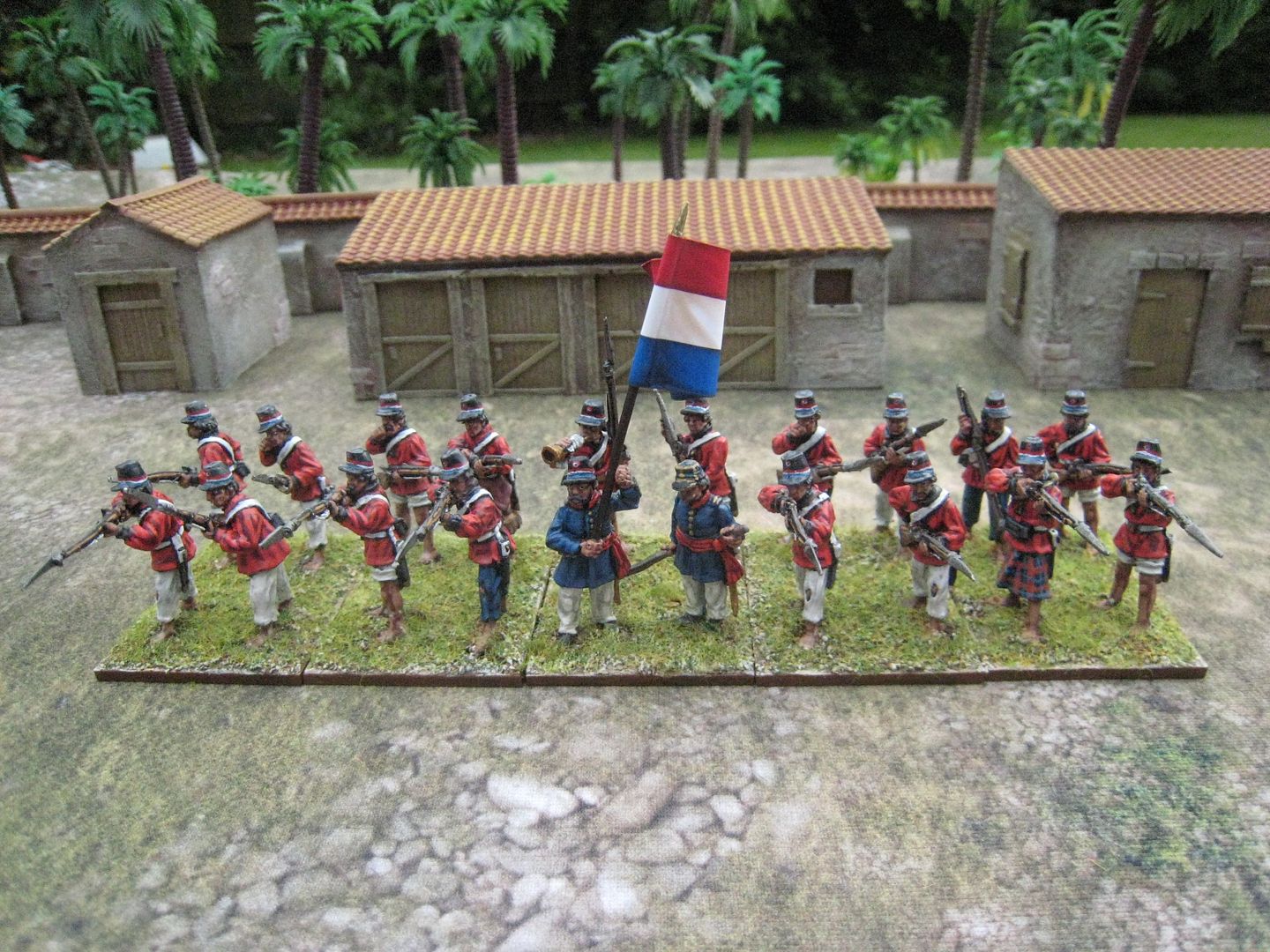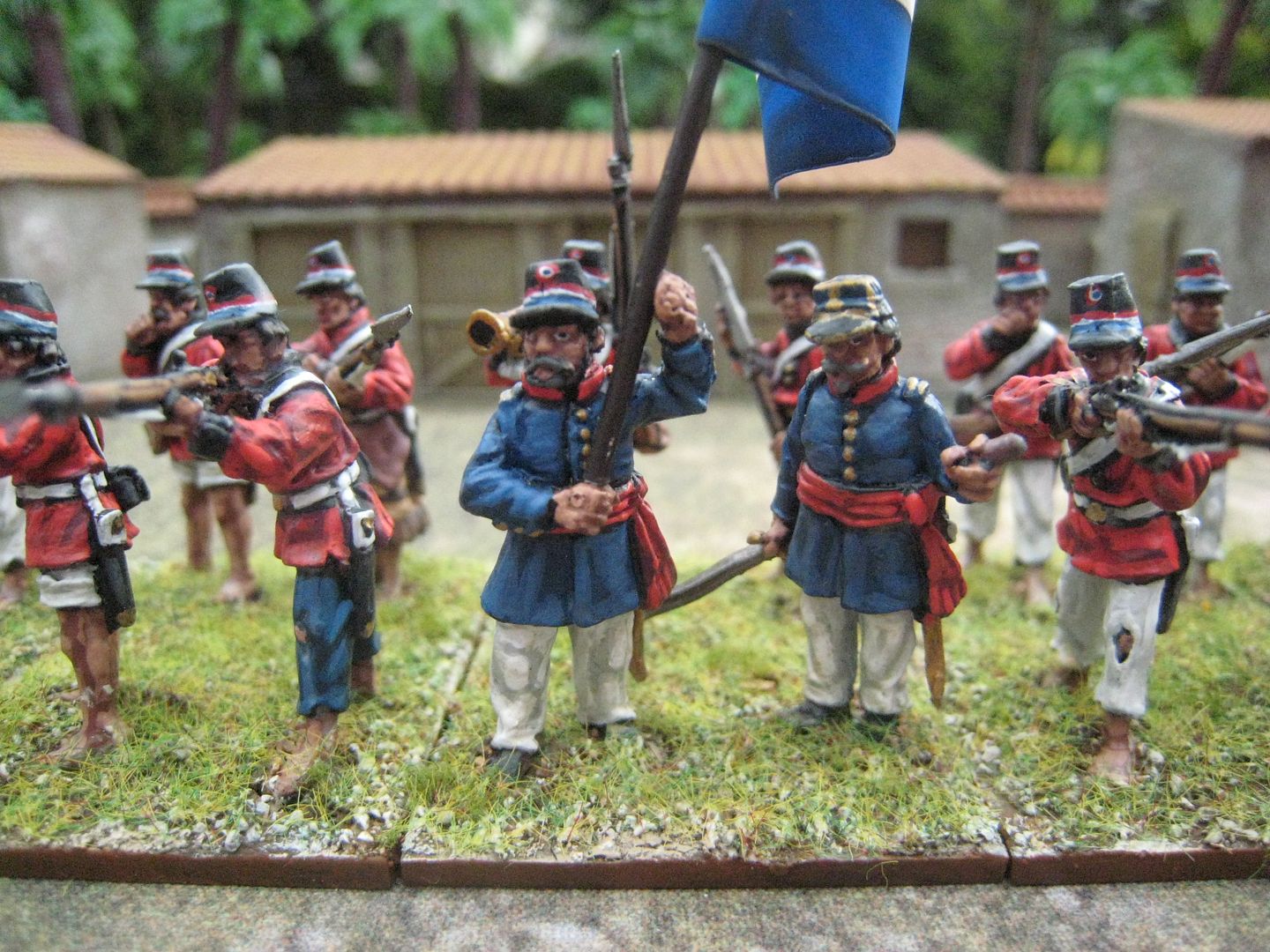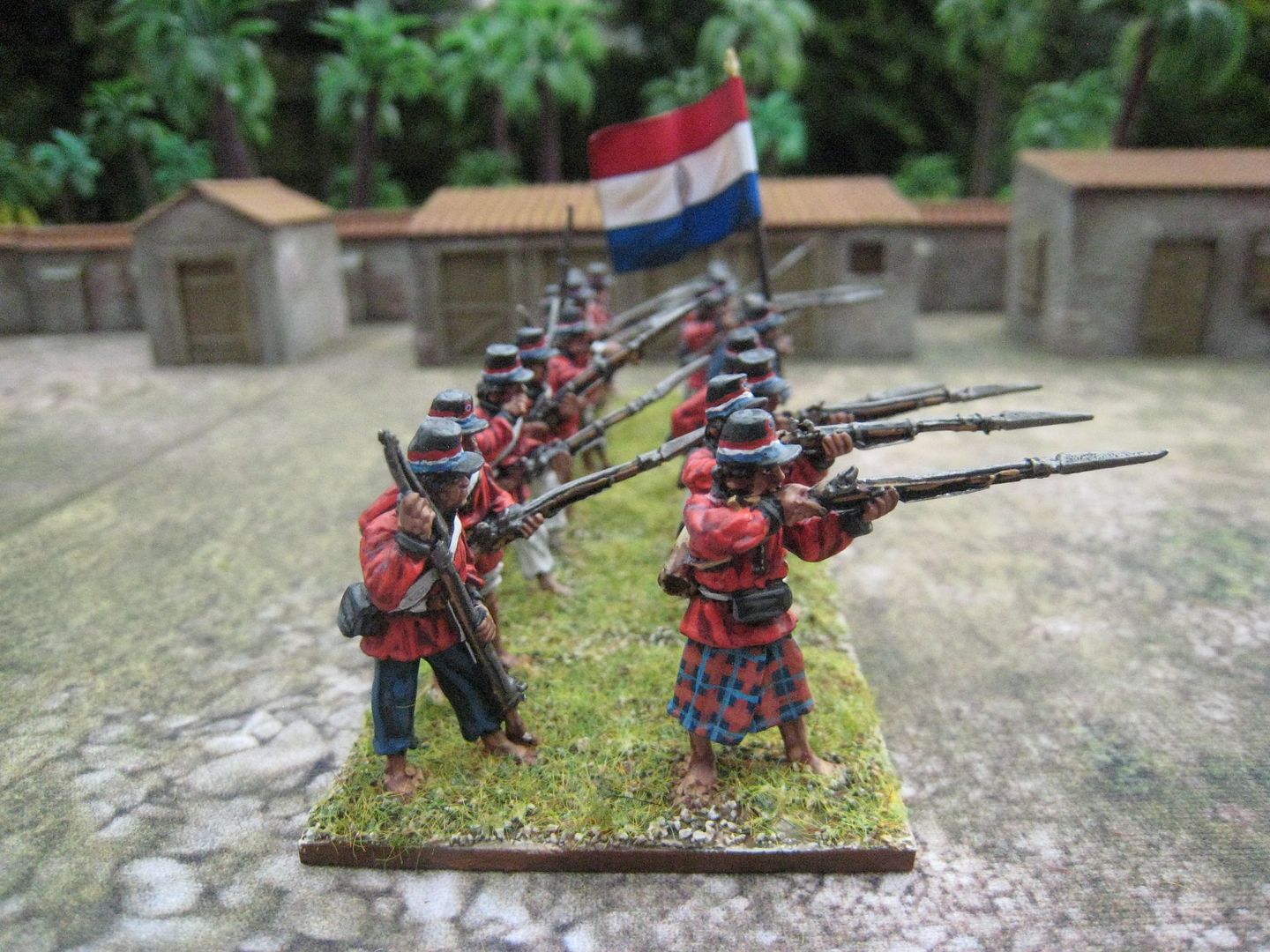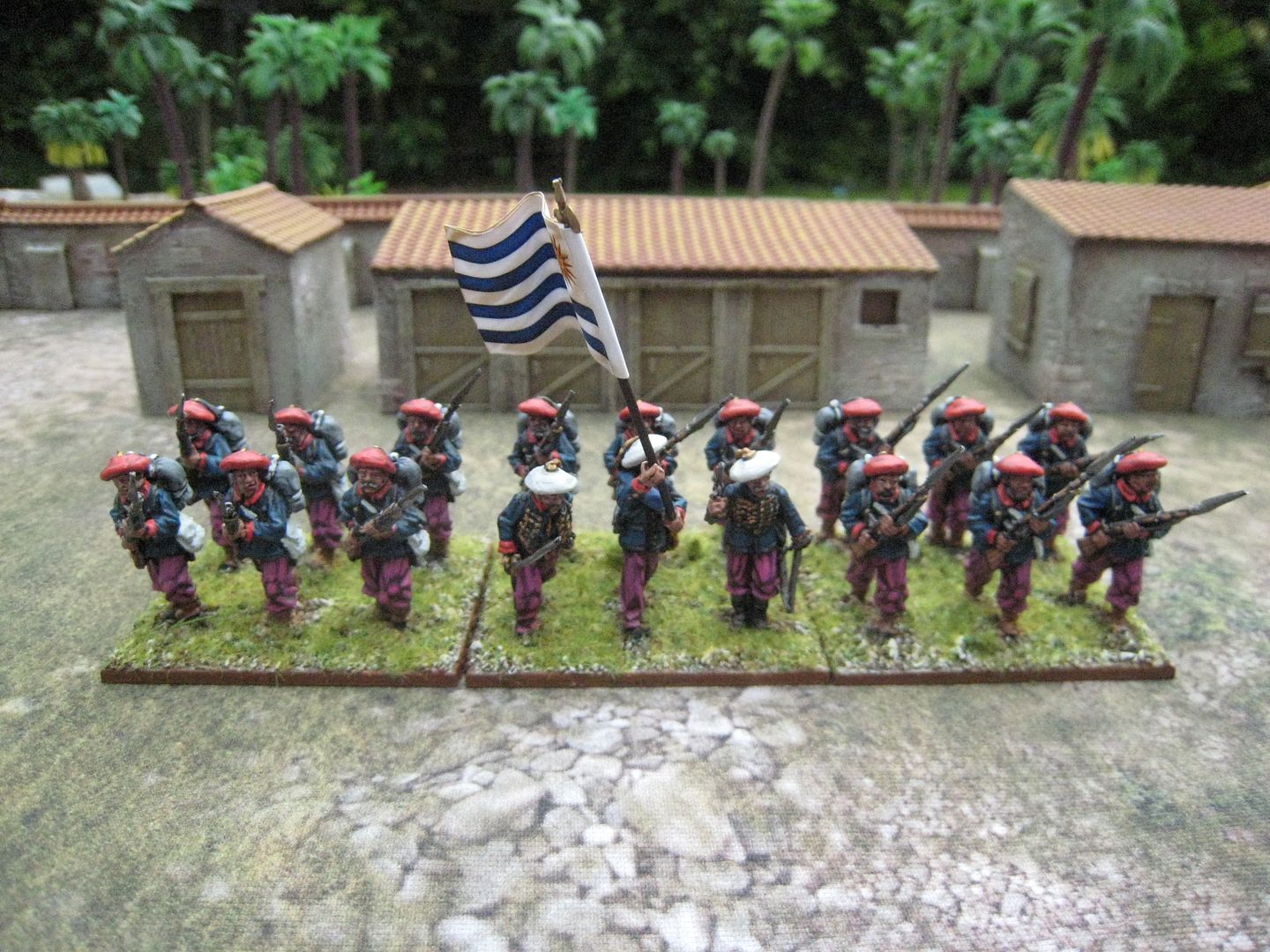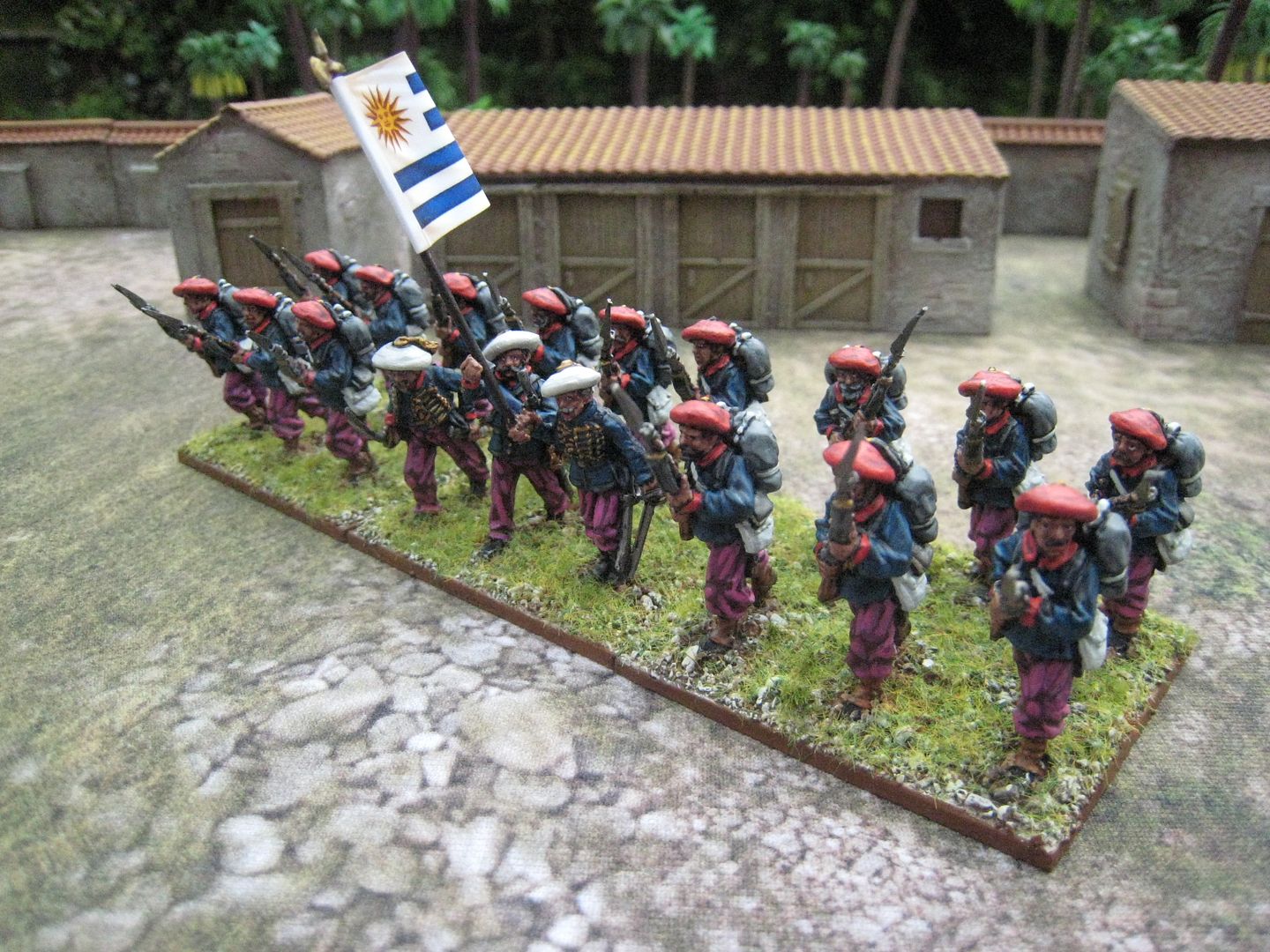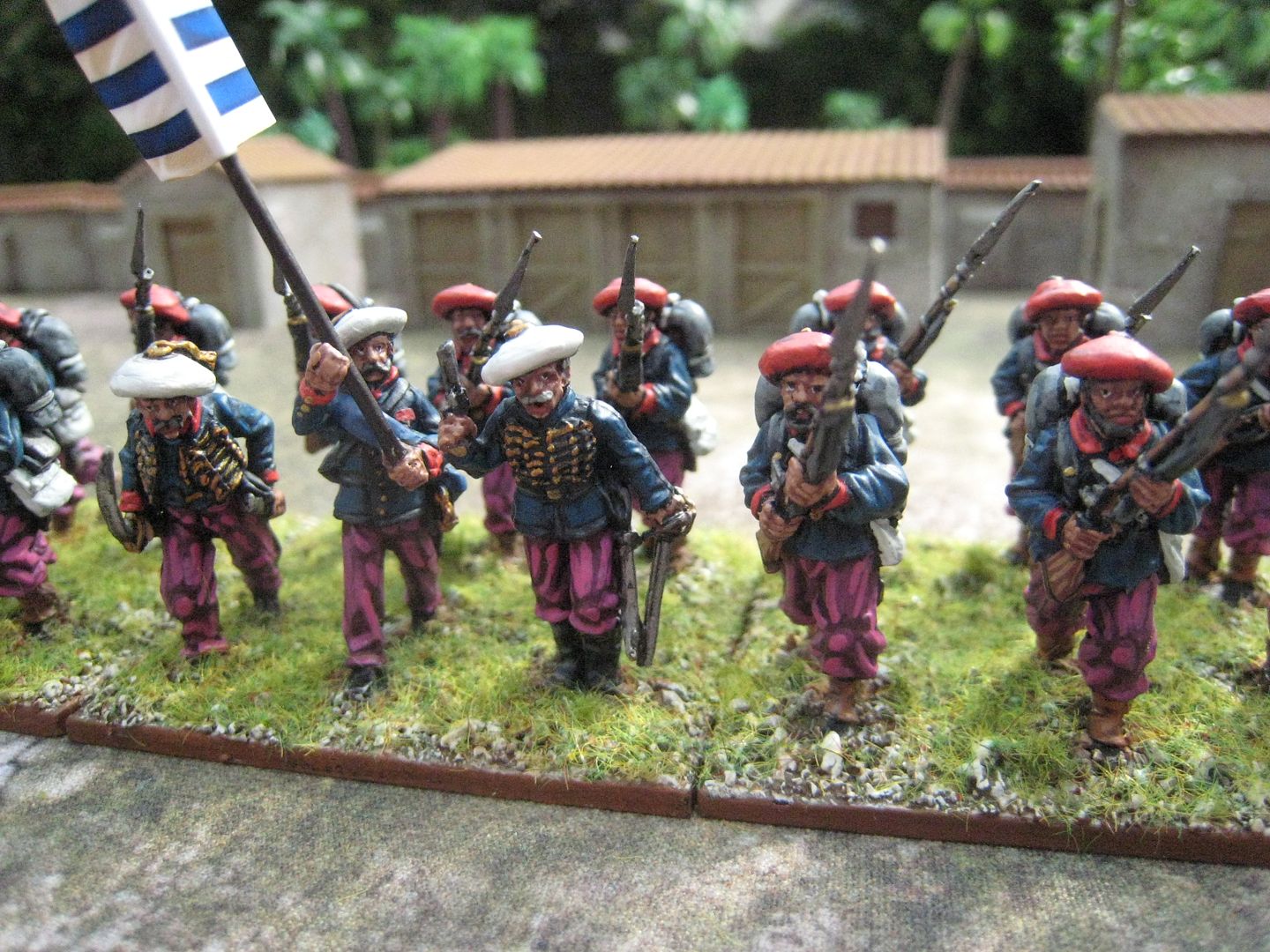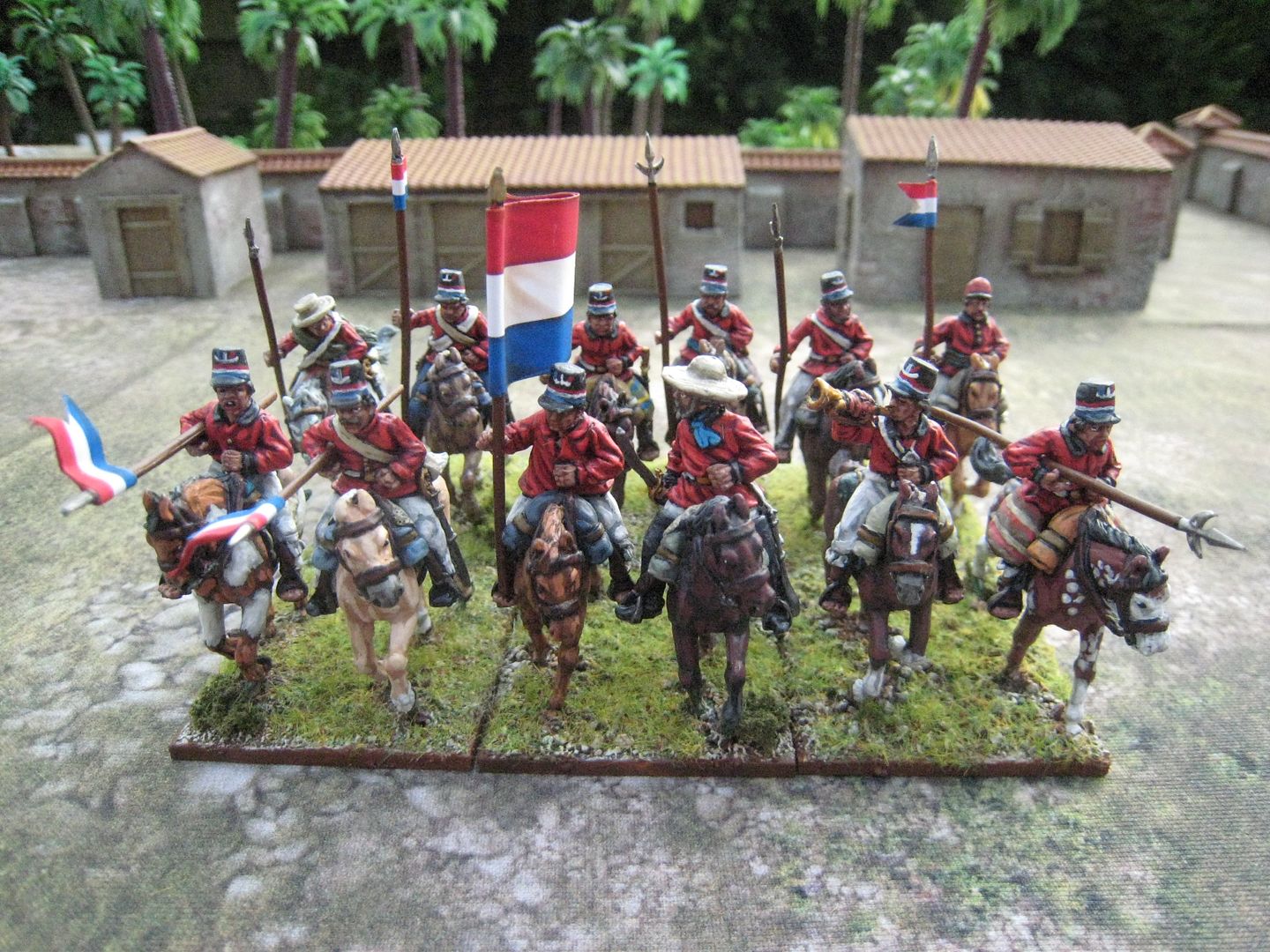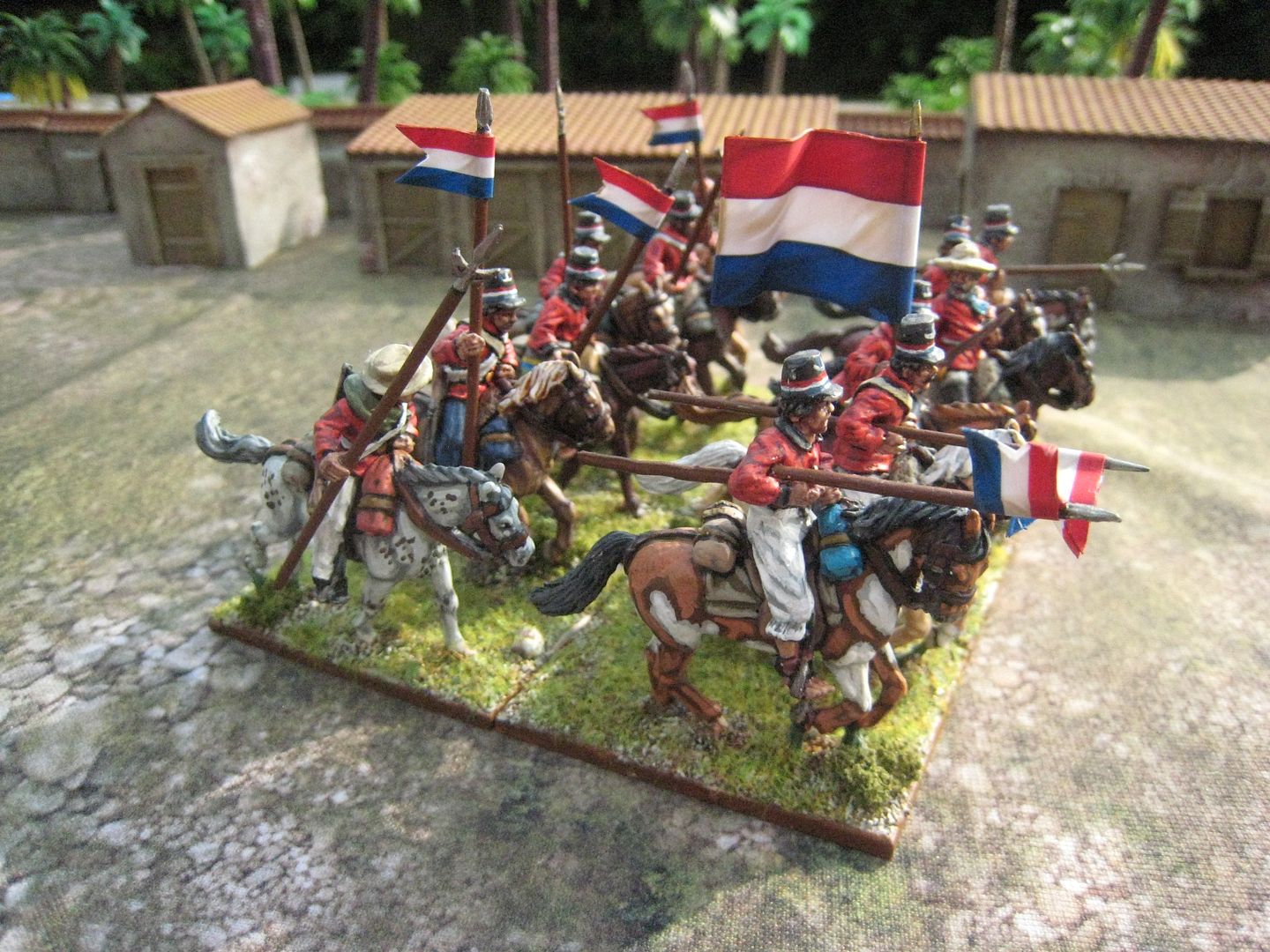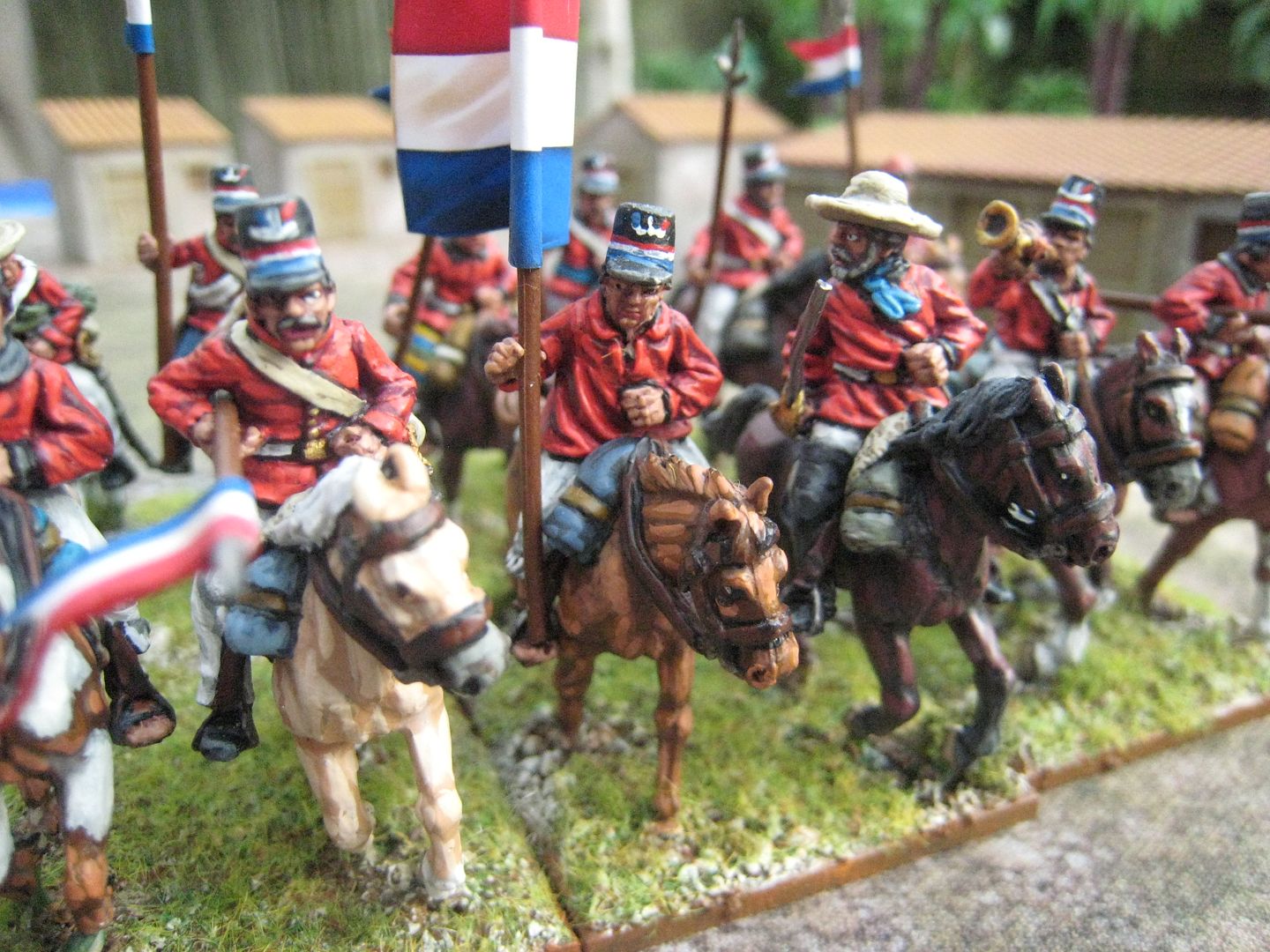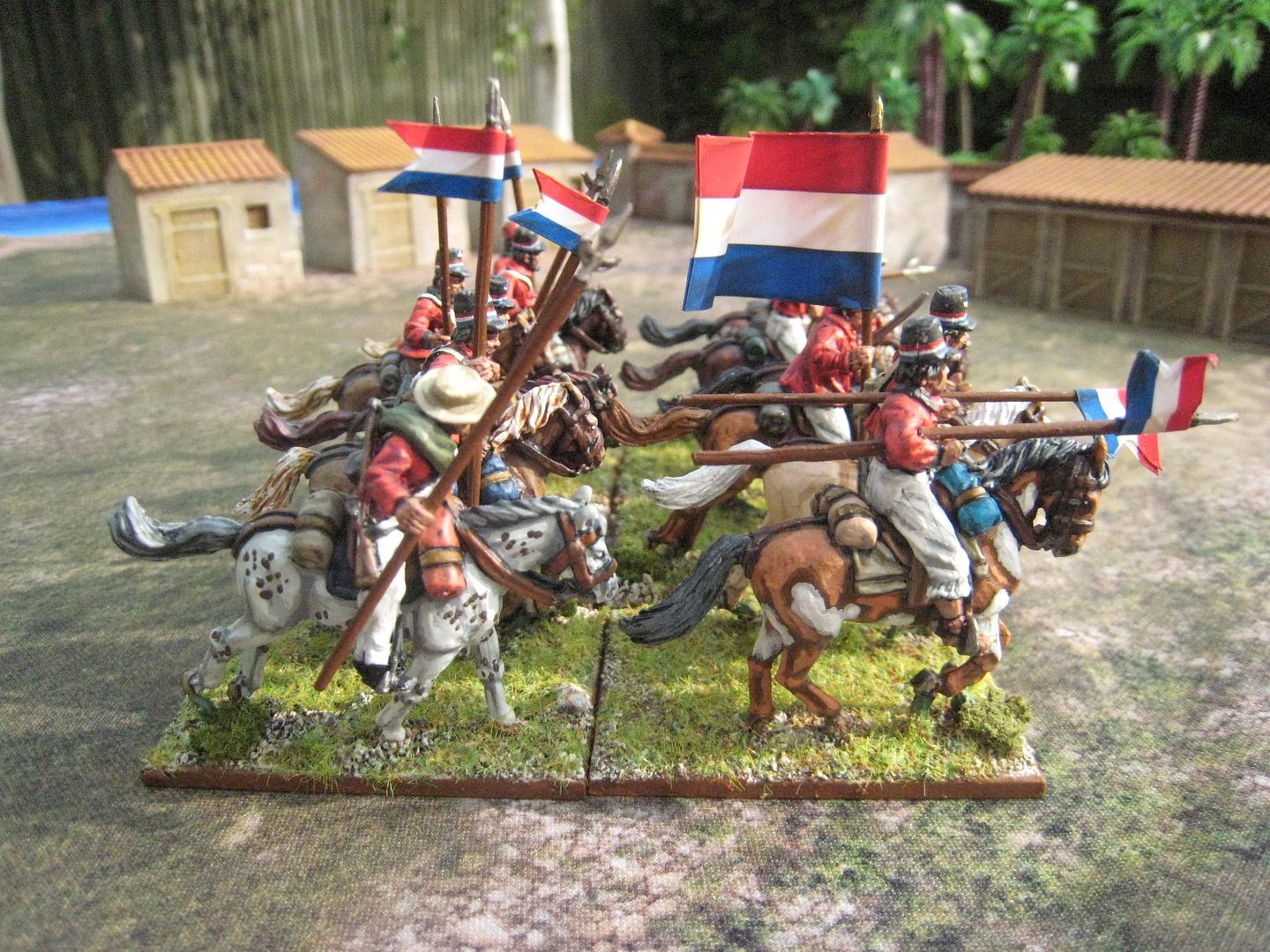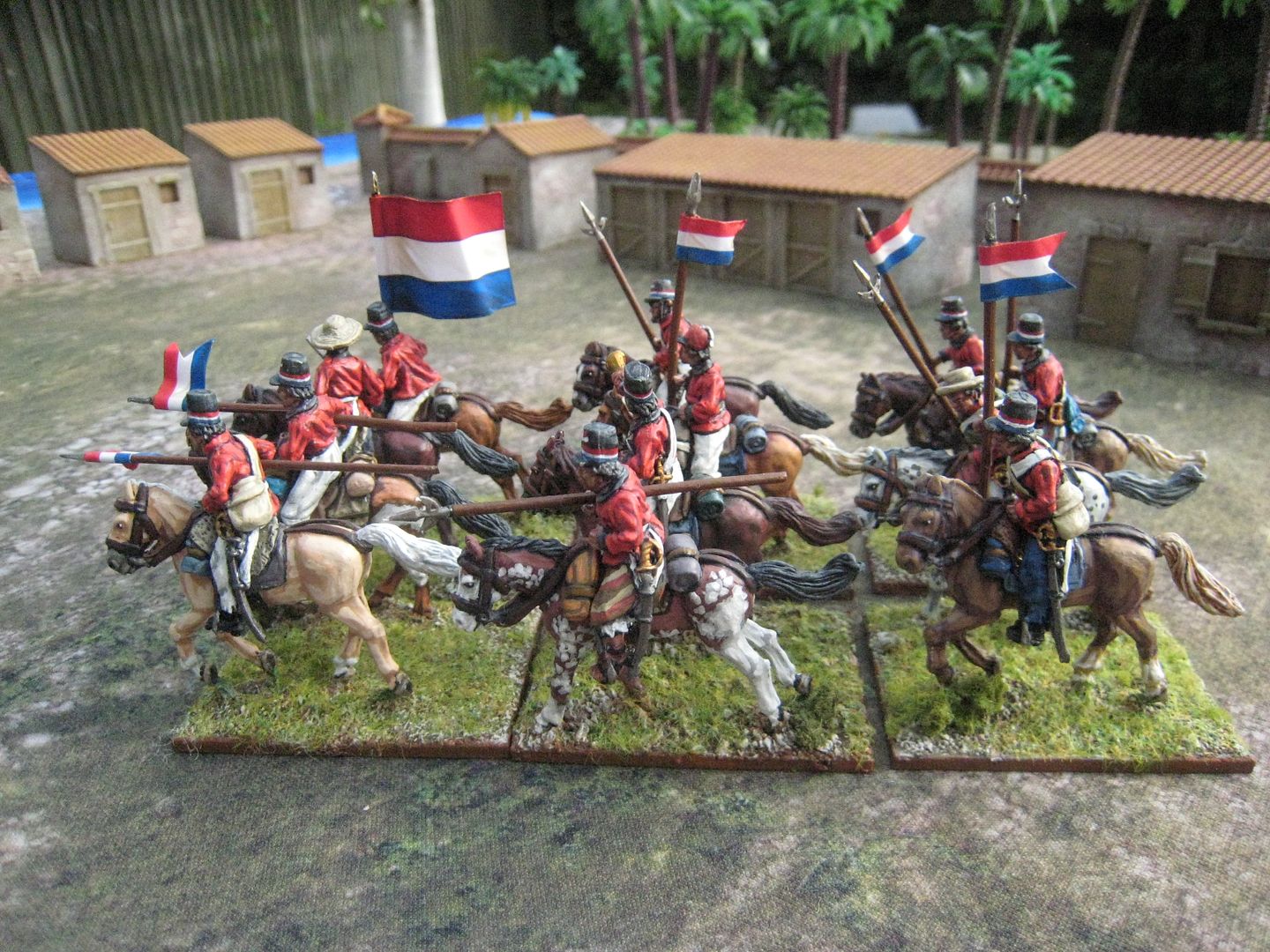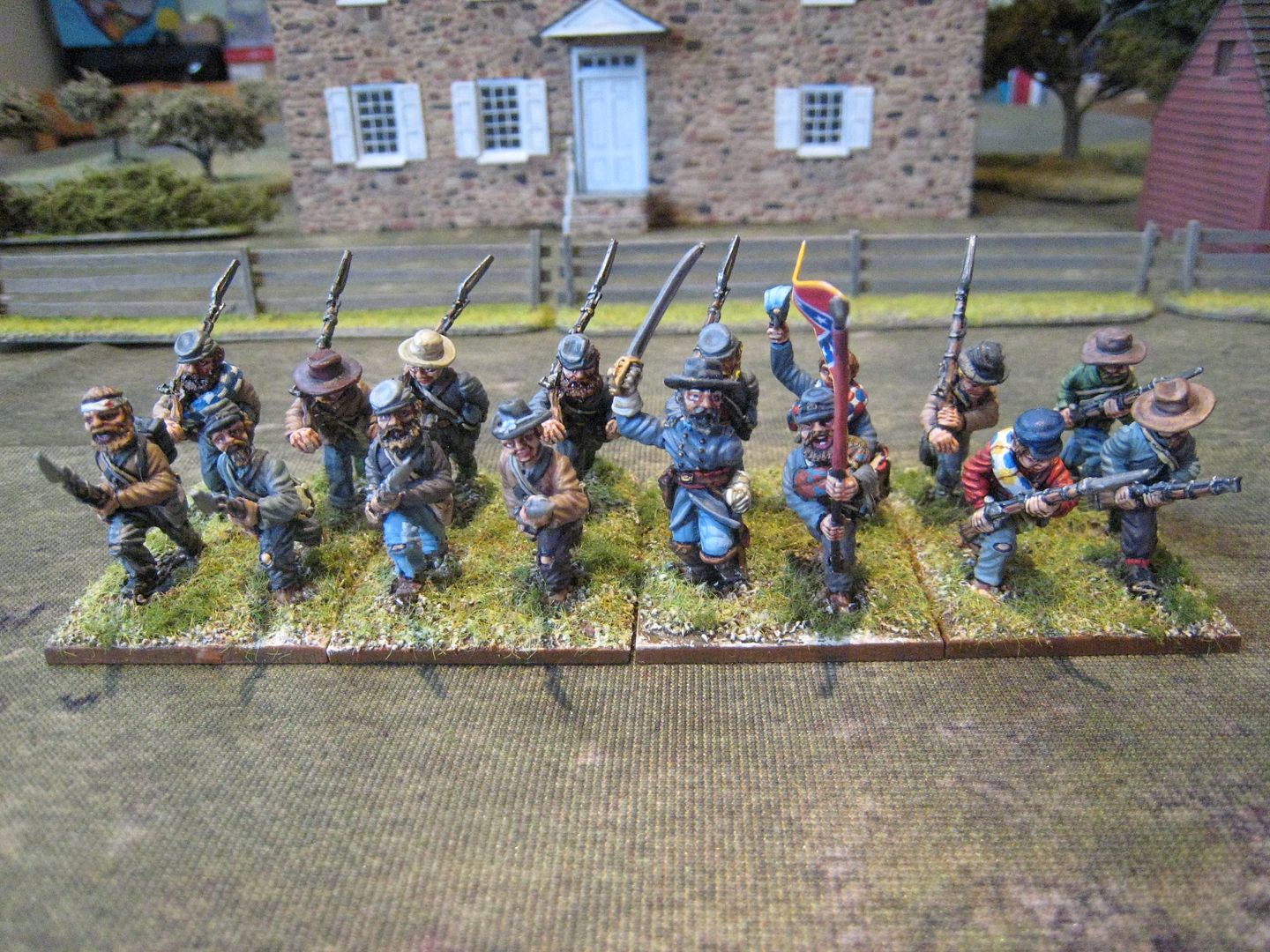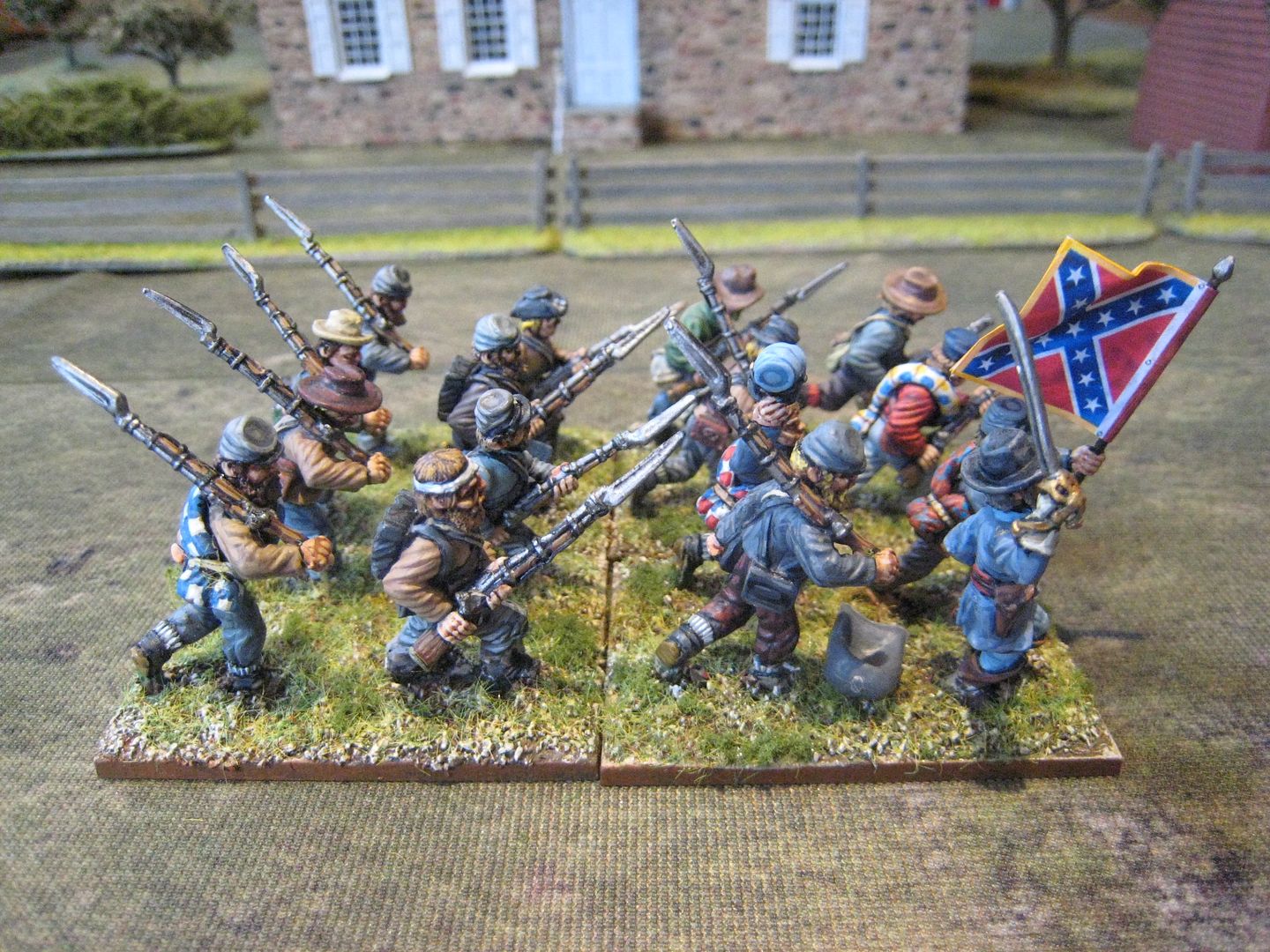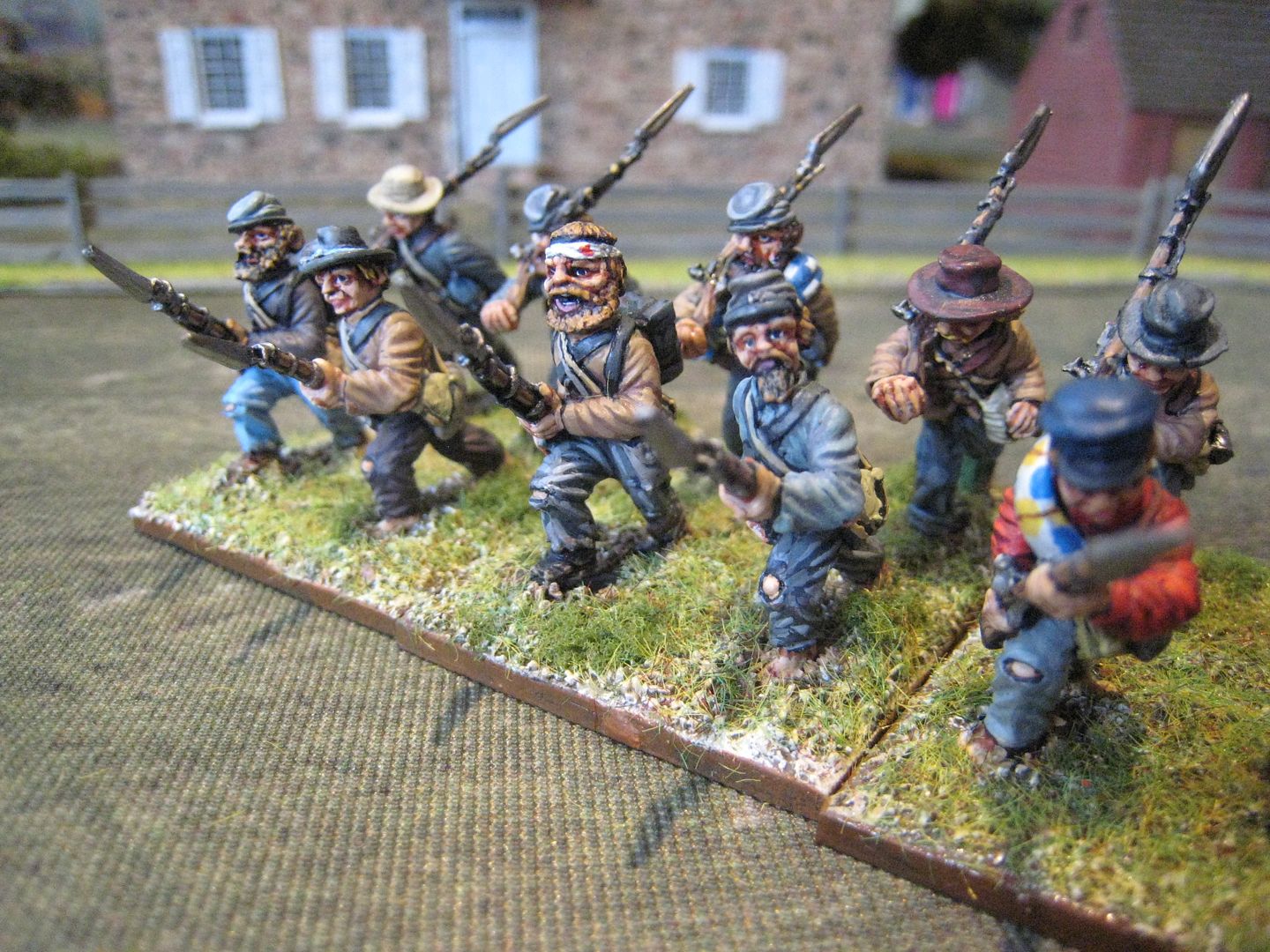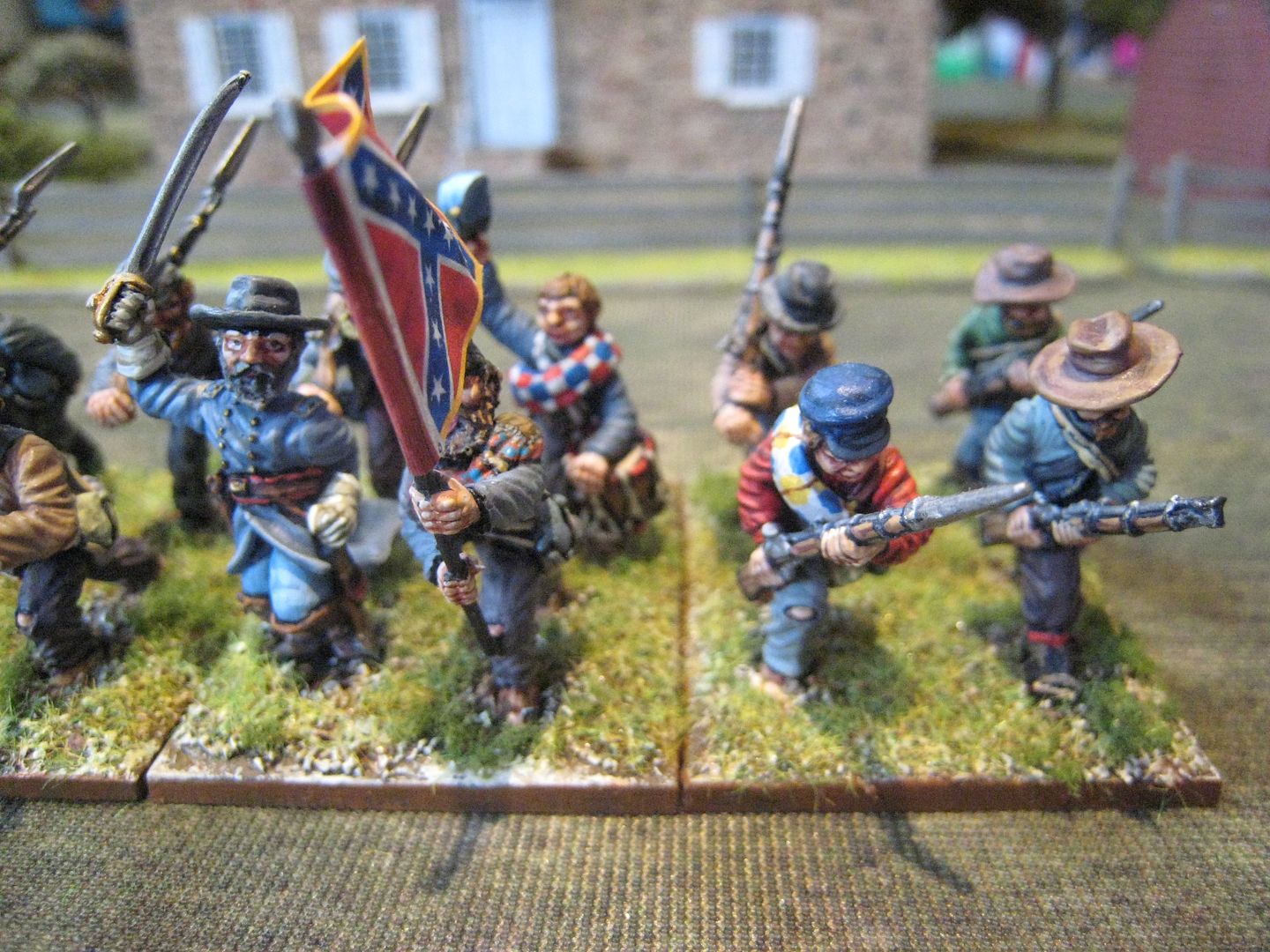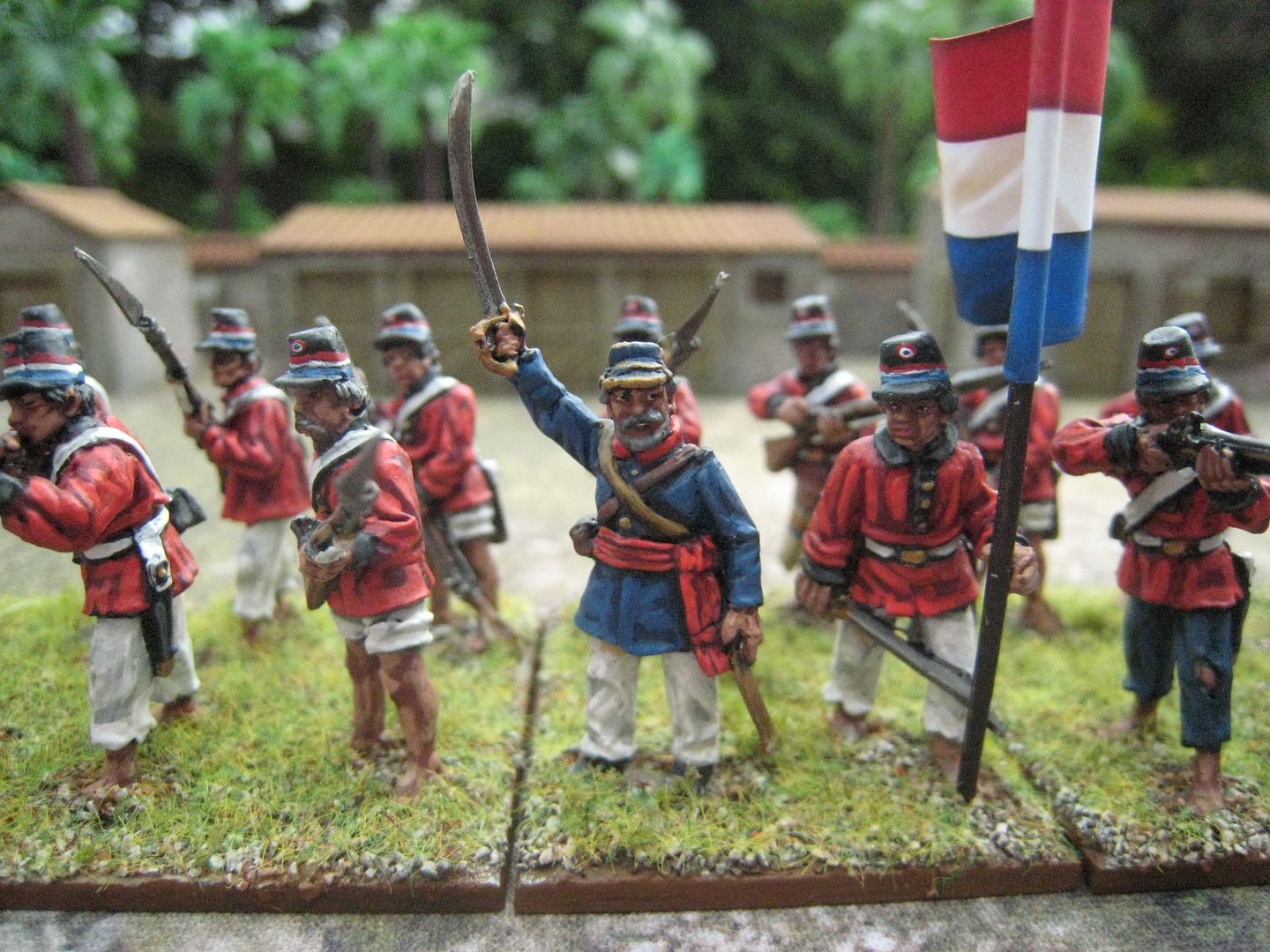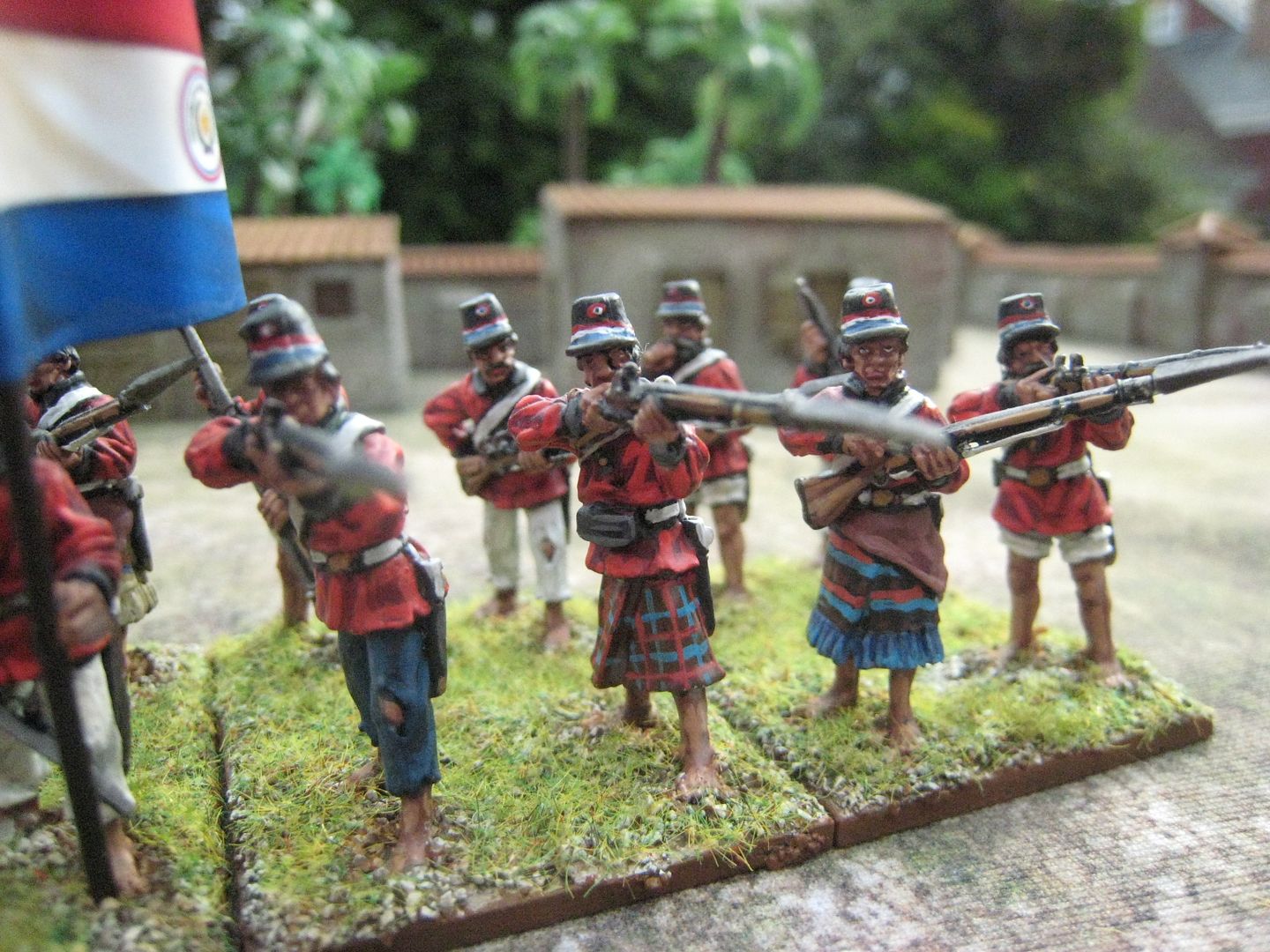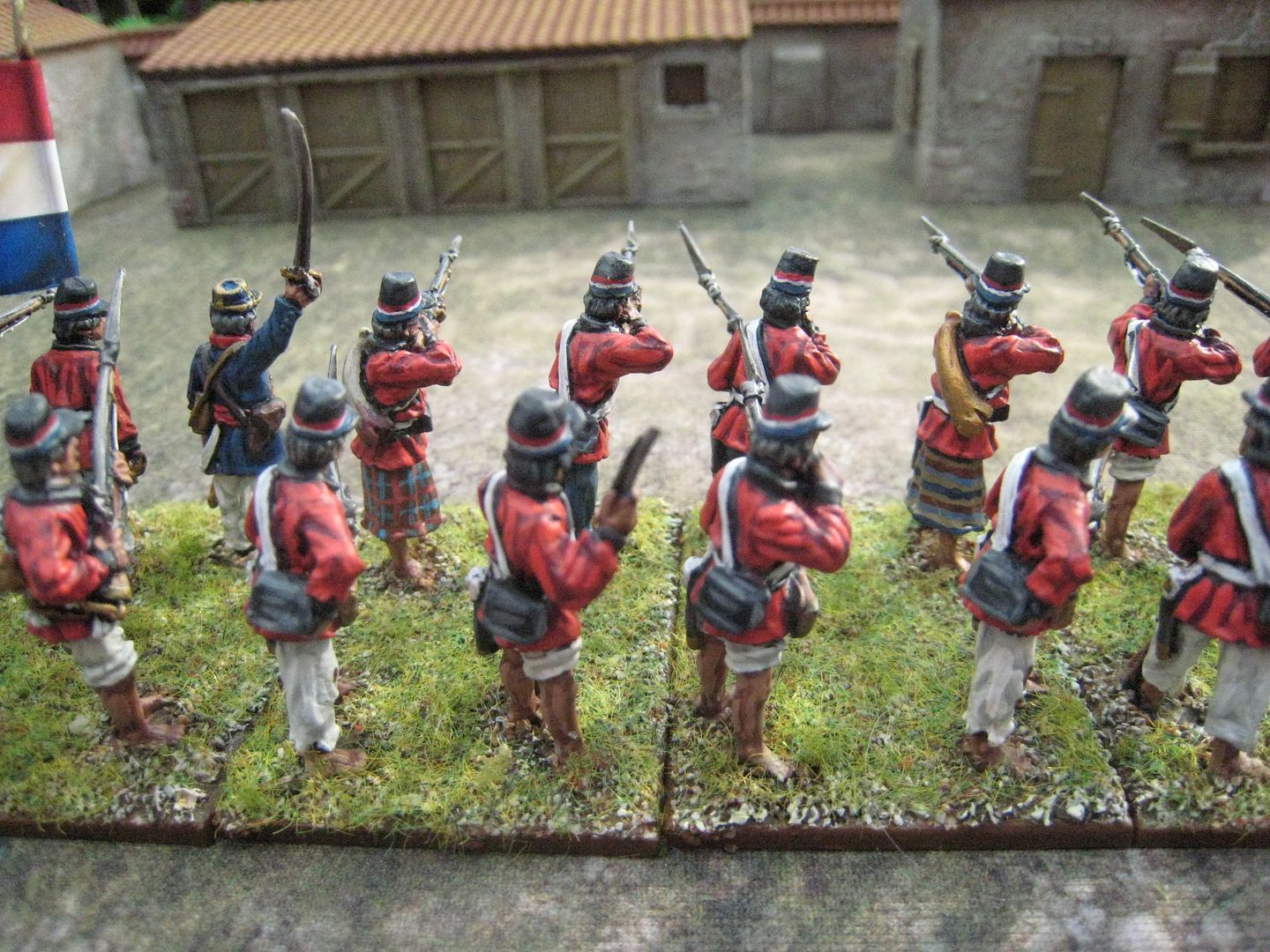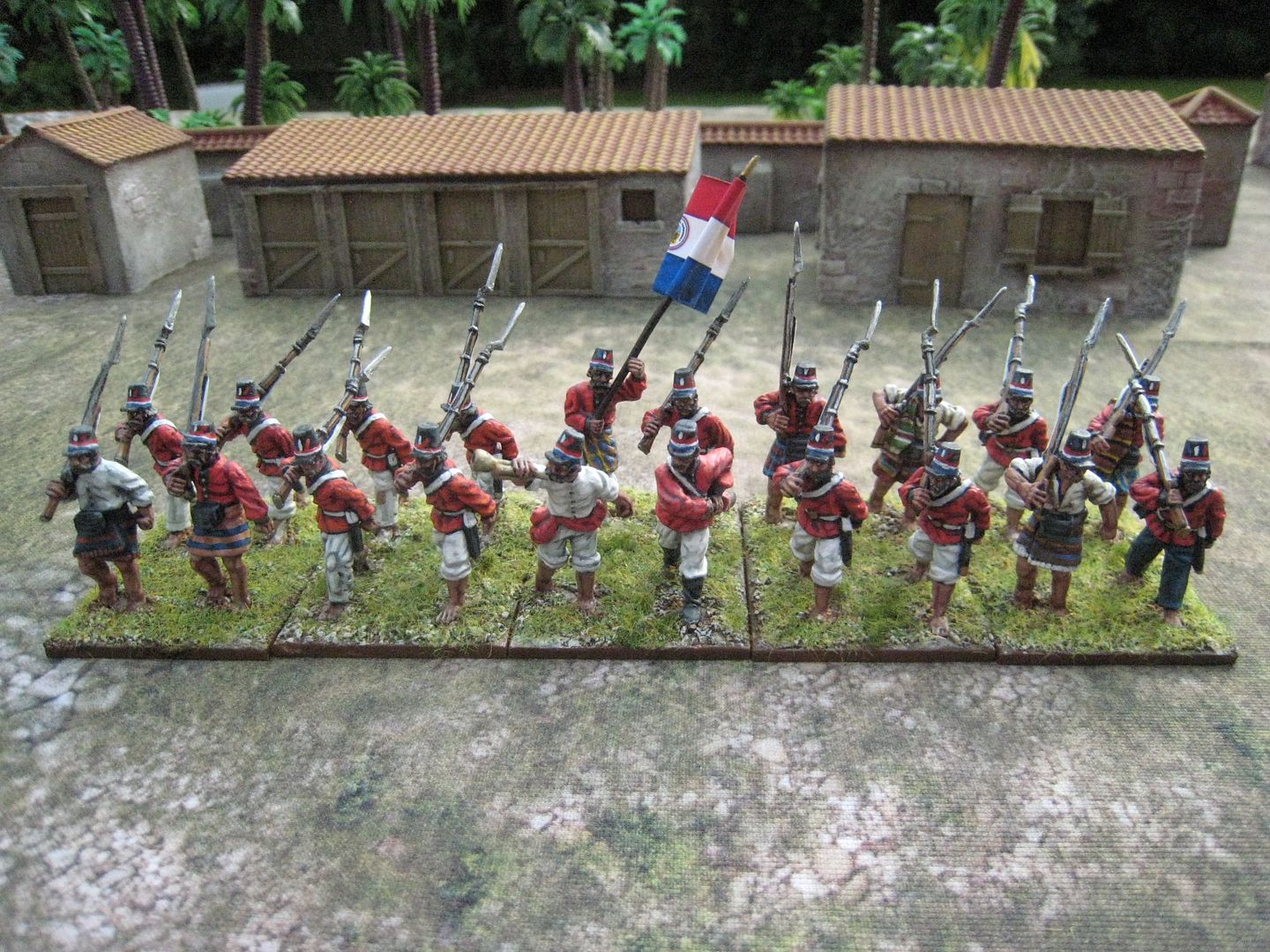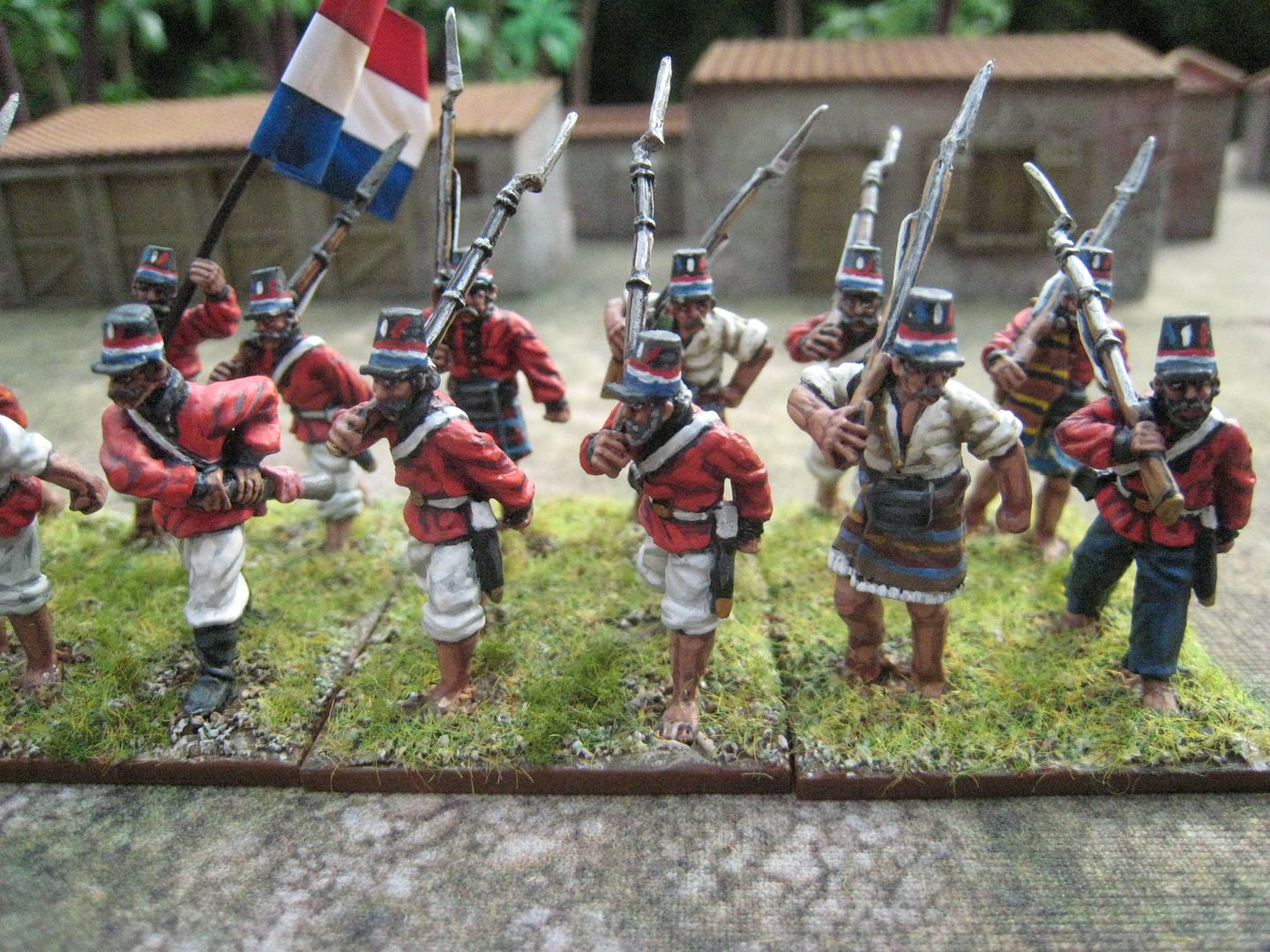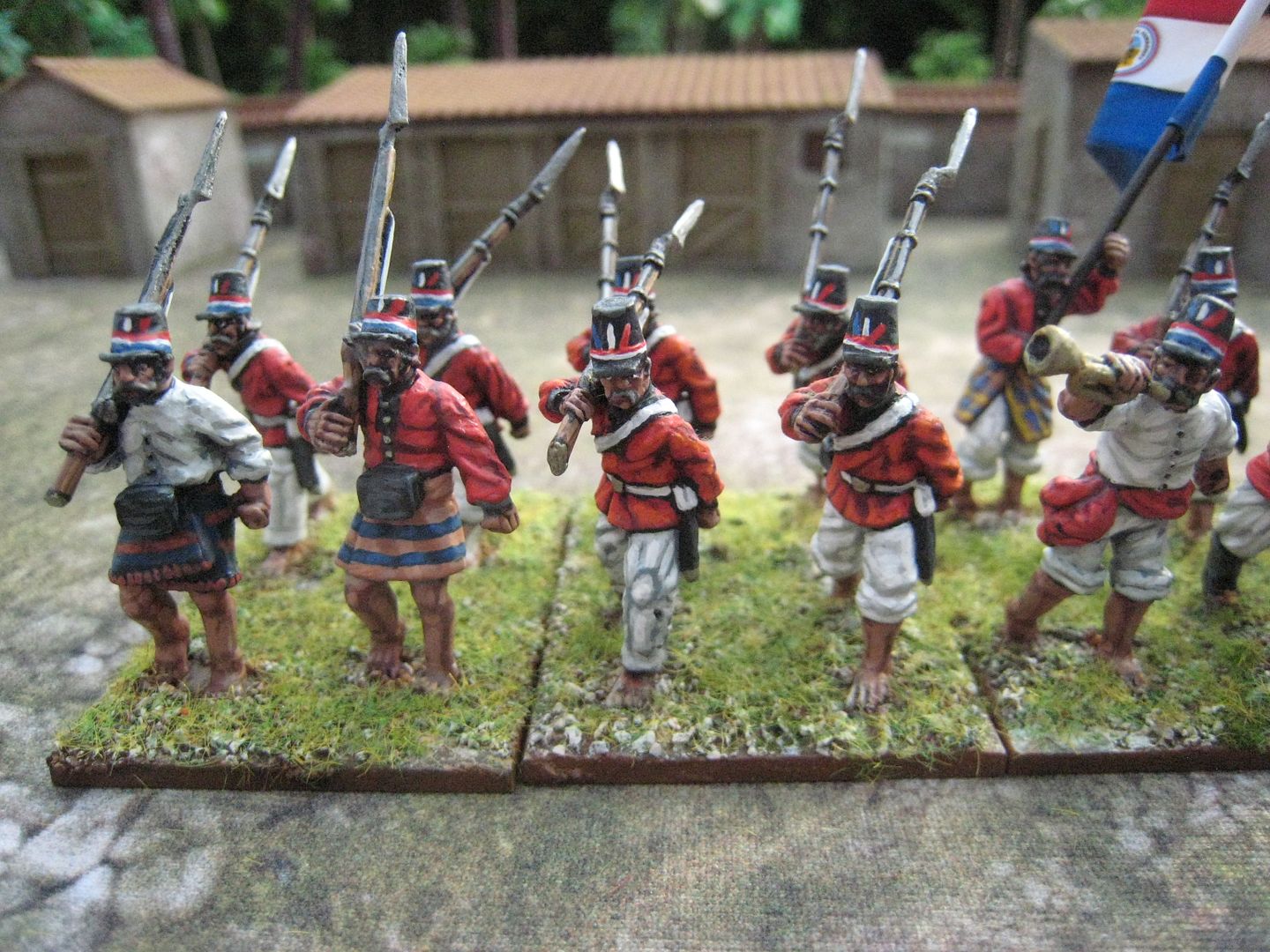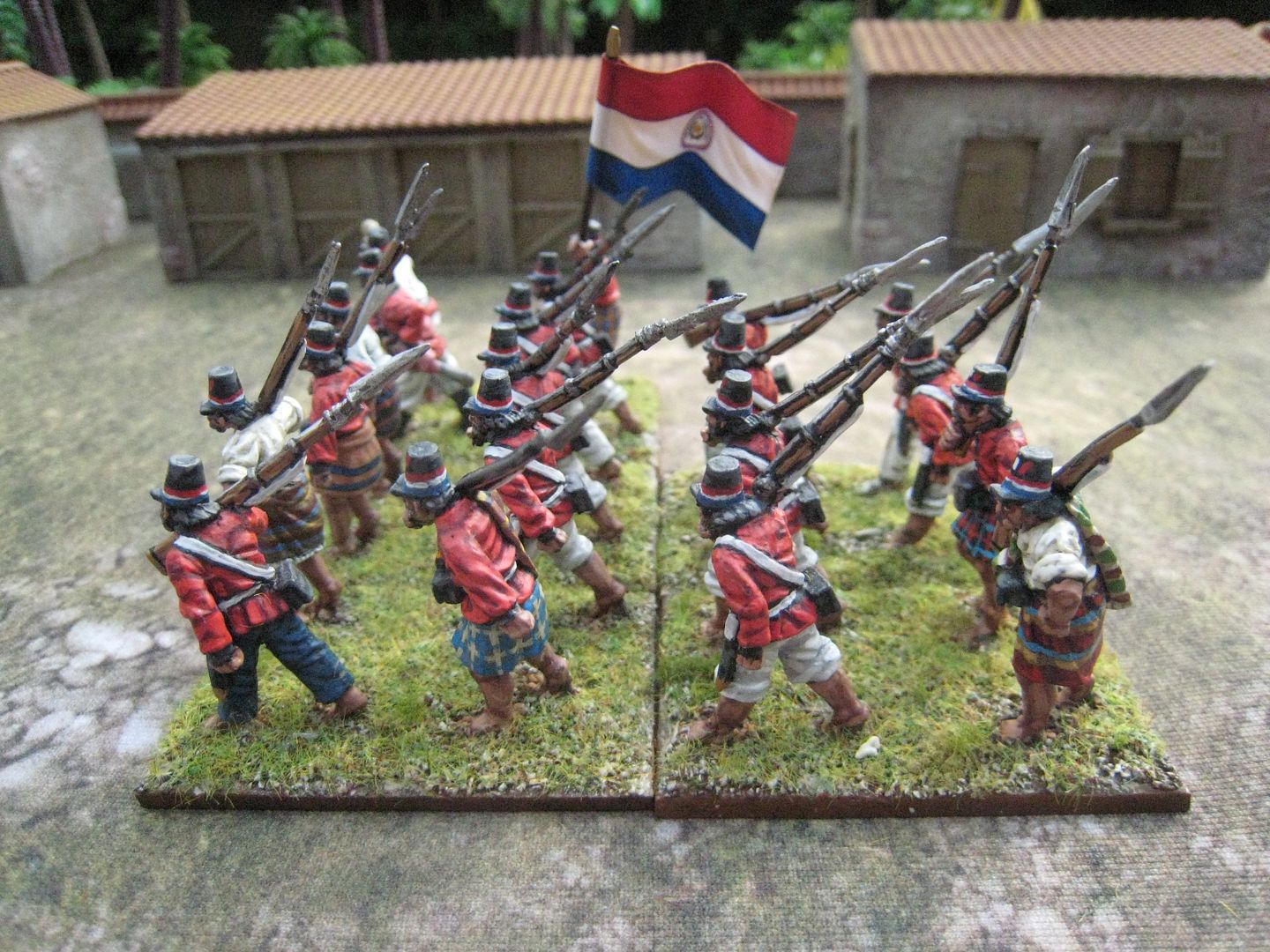This is my second Perry Miniatures firing line battalion. This largely uses the same rank and file figures as the previous unit, although with fewer figures in chiripas, and has the balance of the standing command pack, which includes an officer smoking a cigar. The close-up of that figure in the photo below shows that I need to revisit his sash, as there is clearly some over-zealous black-lining. Also, I admit to finding it much harder these days to paint Perry faces as well I used to. I'm 48 now and haven't felt the need to wear glasses until late last year, when I started to find it difficult to focus on things like Perry faces unless I was painting them in direct sunshine. I think a lack of decent "extreme detail" brushes was partly responsible, but I've realised I'm going to have to get an eye-test sooner rather than later. My younger brother started wearing glasses years ago, so at least I can feel slightly superior on that point (and I have more hair...).
The whanau and I were on holiday in Dorset last week (hence the lack of posts) - a much needed break and our first "holiday" away from Chelmsford since October 2019. It's been a long time since I last added to my "Visits" label, but I'll post about Nothe Fort in Weymouth at some stage. We also visited Bovington Tank Museum, which is one of the best museums I've ever been to; but there was so much stuff I didn't take any photos - just didn't have time to do the place justice.
20 figures. Painted December 2020. Flag by Flags of War.
